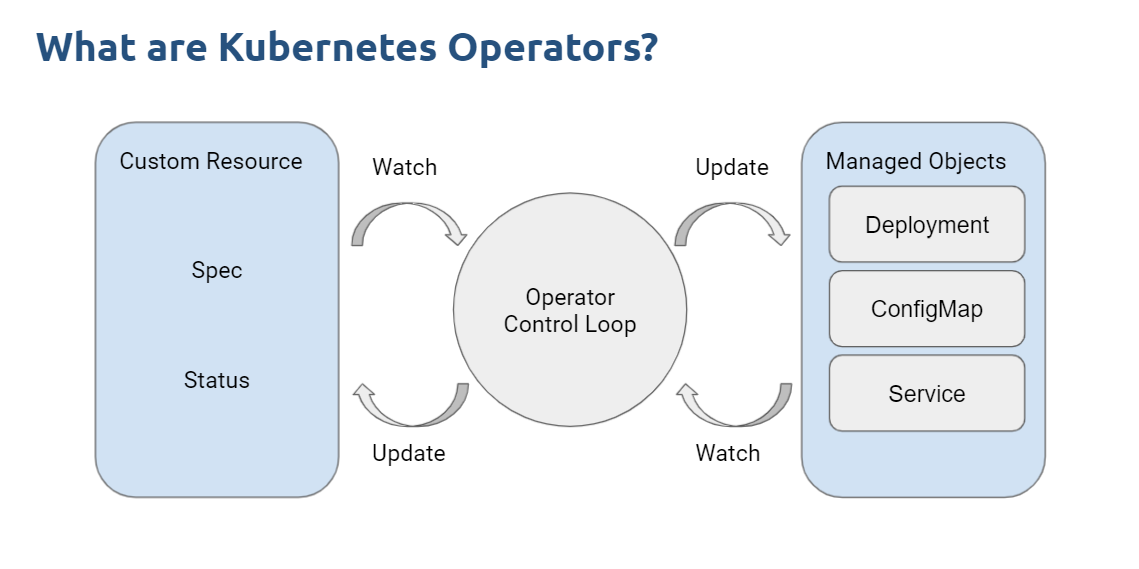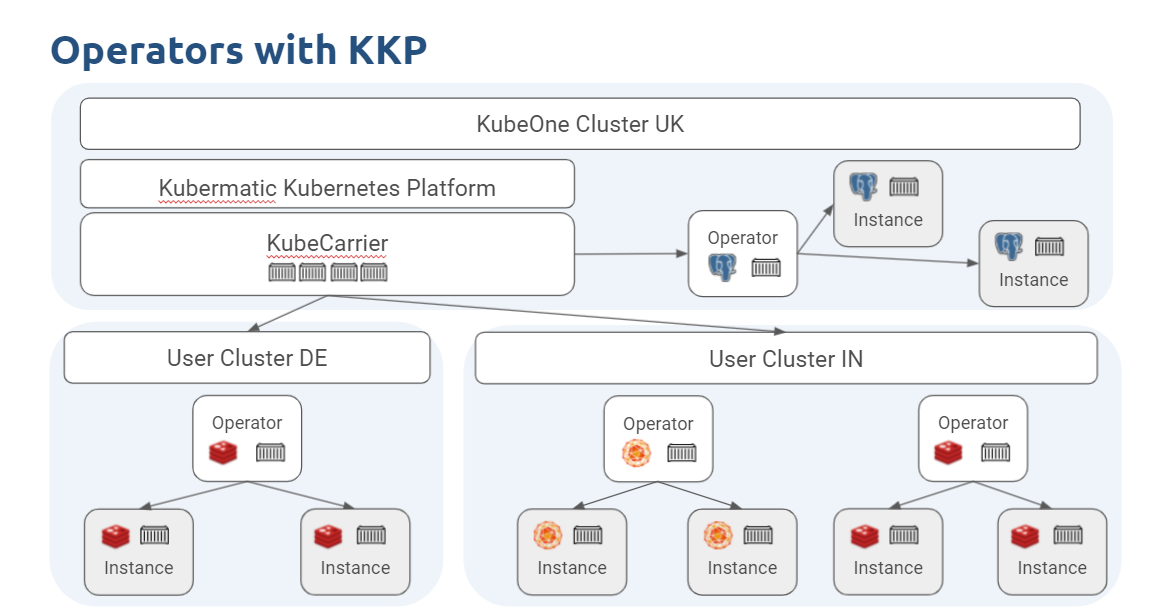There are so many environments that operational tasks and applications have to be managed in today, it can be a real challenge. Implementing cloud native Operators are a great way to improve efficiencies by providing the tools to automate these processes. In this blog post, you’ll learn more about what Kubernetes Operators are and the benefits of adding them.
Operators extend the power of Kubernetes to a wide range of applications, serve as templates for automating application management, and improve scalability and repeatability – critical for deploying stateful applications in a truly cloud native way.
Kubernetes is well known and selected, time after time, for its ability to significantly reduce the operational burden of managing applications and services in a multi-cloud infrastructure. Kubernetes Operators deliver outstanding performance by automating the entire lifecycle of the applications and services it manages.
What Are Kubernetes Operators?
A Kubernetes Operator is a way of automating the management of an application, including its packaging and deployment on Kubernetes, using the kubectl tooling and the Kubernetes API (application programming interface). It expands the utilities of the Kubernetes API by automating the creation, configuration and management of both stateful and stateless applications, no matter how complex. By including domain or application-specific knowledge, along with the basic concepts of resources and controllers, this method fully automates the entire lifecycle of the software it manages. It monitors the application, backs up data, deploys failure recovery and performs upgrades automatically. By eliminating complex and problematic manual tasks, Kubernetes Operators make these processes consistent, repeatable and scalable, reducing errors and providing maximum application performance.

Why Implement Operators?
Implementing Operators has several benefits.
Automation advantages
Automates operational tasks, normally managed by human operators, including
- Deployments
- Upgrades
- Backups
- Failure recovery
Additional advantages
Makes applications more Kubernetes-native (lots of Kubernetes features, right out of the box)
- Interacts with your applications using Kubernetes APIs and kubectl toolings
Tests application operations and eliminates human error in application lifecycle management
Simplifies application management in multi and hybrid cloud environments
- Enhanced compatibility means Operators can work across different types of distributions
So, let’s have a look at the two types of Operators…
Namespace-Scoped and Cluster-Scoped Operators
Namespace-Scoped Operators
- Manages resources in a single Namespace
Benefits:
- Flexible to run different versions of an operator independently in a cluster
- Helpful in dev or single cluster environments
Cluster-Scoped Operators
- Manages resources cluster-wide
- Single instance of an operator in a Kubernetes cluster
- Recommended for highly distributed environments
Benefits:
- Easier to manage 1000’s of clusters
- Significantly reduces resources required in multi-tenant environments (so they can be deployed in other, more important areas!)
Operators With Kubermatic Kubernetes Platform and KubeCarrier
Kubernetes Operators are leveraged by KubeCarrier, our open source hub for managing applications and services across multiple Kubernetes Clusters, to automate the provisioning and management lifecycle of all services, applications and API-accessible hardware devices.
As cloud native adoption accelerates, operations teams are confronted with the complexities of service management across multiple clusters, clouds, and regions. They struggle with enterprise-grade compliance and the operational burden involved.
KubeCarrier addresses these complexities by harnessing Operators and the Kubernetes API into a central framework, allowing enterprises and service providers to deliver cloud native service management from one multi-cloud, multi-cluster hub. Internal or external customers can immediately deploy the cloud native software and services they need, including databases, data stores, monitoring, service meshes, and other Kubernetes tooling.
With Kubermatic Kubernetes Platform, we extend the Operator model beyond applications to manage the clusters themselves – essentially, we are using Kubernetes to operate Kubernetes.
We provide a central service hub that leverages the KubeCarrier system and cluster-scoped Kubernetes Operators, to provide multi-tenancy support through resource isolation in Kubernetes Namespace. Cluster-scoped Operators can manage service instances across multiple Namespaces, which reduces the maintenance burden and complexities of service management across multiple clusters, clouds, and regions.

Are you ready to simplify, automate and improve the management of your applications, tasks and resources in your single or multi-cluster container environment? Contact us!
Find Out More Here
- Blog Post: Getting Started With KubeCarrier
- Documentation: About Kubernetes Operators
- Documentation: KuberCarrier
- Demo: Automate Your Clusters Across Multi-Cloud with Kubermatic Kubernetes Platform






